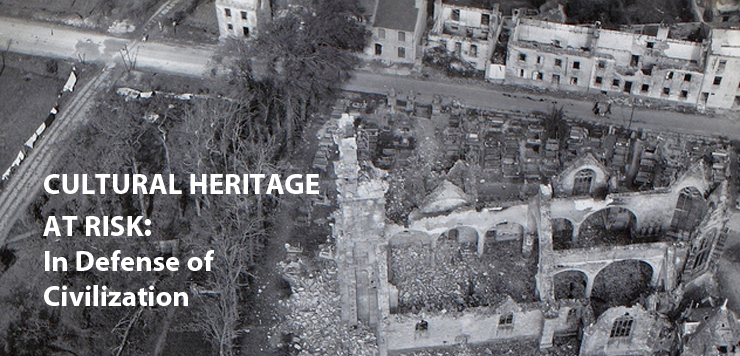Start Date
27-10-2017 2:45 PM
End Date
27-10-2017 3:15 PM
Abstract
In the event of a disaster, regardless of the type or scope, the first response is always local. For the institutions and organizations charged with safeguarding the nation’s cultural and historic resources – museums, historical societies, libraries, and municipal offices, to name just a few – building relationships with local first responders and emergency managers before disaster strikes is key to ensuring the safety of staff and collections. State emergency management agencies are also collaborating with their state cultural agencies to protect these valuable and vulnerable resources. The resulting emergency networks better position the local community and the state to be ready to respond to and recover from disasters affecting cultural and historic resources. And when a disaster rises to the level requiring federal engagement, local and state partnerships play a vital role supporting the Heritage Emergency National Task Force, a public-private partnership co-led by FEMA and the Smithsonian Institution, in bringing much-needed assistance to the impacted cultural community.
Included in
Archaeological Anthropology Commons, Architectural History and Criticism Commons, Art and Materials Conservation Commons, Arts Management Commons, Cultural Resource Management and Policy Analysis Commons, Fine Arts Commons, Forensic Science and Technology Commons, Geographic Information Sciences Commons, Historic Preservation and Conservation Commons, International Relations Commons, Other History of Art, Architecture, and Archaeology Commons
Forming Community Partnerships
In the event of a disaster, regardless of the type or scope, the first response is always local. For the institutions and organizations charged with safeguarding the nation’s cultural and historic resources – museums, historical societies, libraries, and municipal offices, to name just a few – building relationships with local first responders and emergency managers before disaster strikes is key to ensuring the safety of staff and collections. State emergency management agencies are also collaborating with their state cultural agencies to protect these valuable and vulnerable resources. The resulting emergency networks better position the local community and the state to be ready to respond to and recover from disasters affecting cultural and historic resources. And when a disaster rises to the level requiring federal engagement, local and state partnerships play a vital role supporting the Heritage Emergency National Task Force, a public-private partnership co-led by FEMA and the Smithsonian Institution, in bringing much-needed assistance to the impacted cultural community.

Speaker Information
Lori Foley is the administrator of the Heritage Emergency National Task Force (HENTF), a partnership of over 50 national service organizations and federal agencies co-sponsored by FEMA and the Smithsonian Institution. Founded in 1995 to protect cultural heritage from the damaging effects of natural disasters and other emergencies, HENTF serves as a vital response and recovery resource following Presidentially declared disasters, ensuring that local, county, state, tribal, and federal cultural stewards and emergency managers work together to help the cultural community obtain needed assistance. Prior to joining FEMA and serving as the HENTF liaison to the Smithsonian, Lori was Vice President of Emergency Programs at Heritage Preservation, where her responsibilities included connecting cultural stewards with emergency managers at all levels of government through such programs as Alliance for Response and the State Heritage Emergency Partnership. Lori has lectured widely and conducted numerous workshops on emergency preparedness and response at cultural institutions across the U.S. and internationally. She is a member of the US Committee of the Blue Shield, the International Association of Emergency Managers, the statewide cultural heritage emergency network COSTEP Massachusetts, and serves as an advisor to other similar state and local networks.